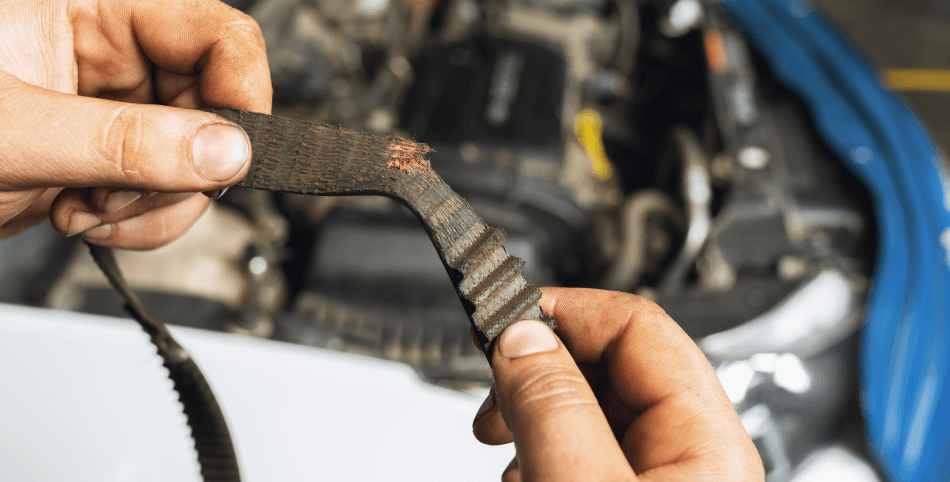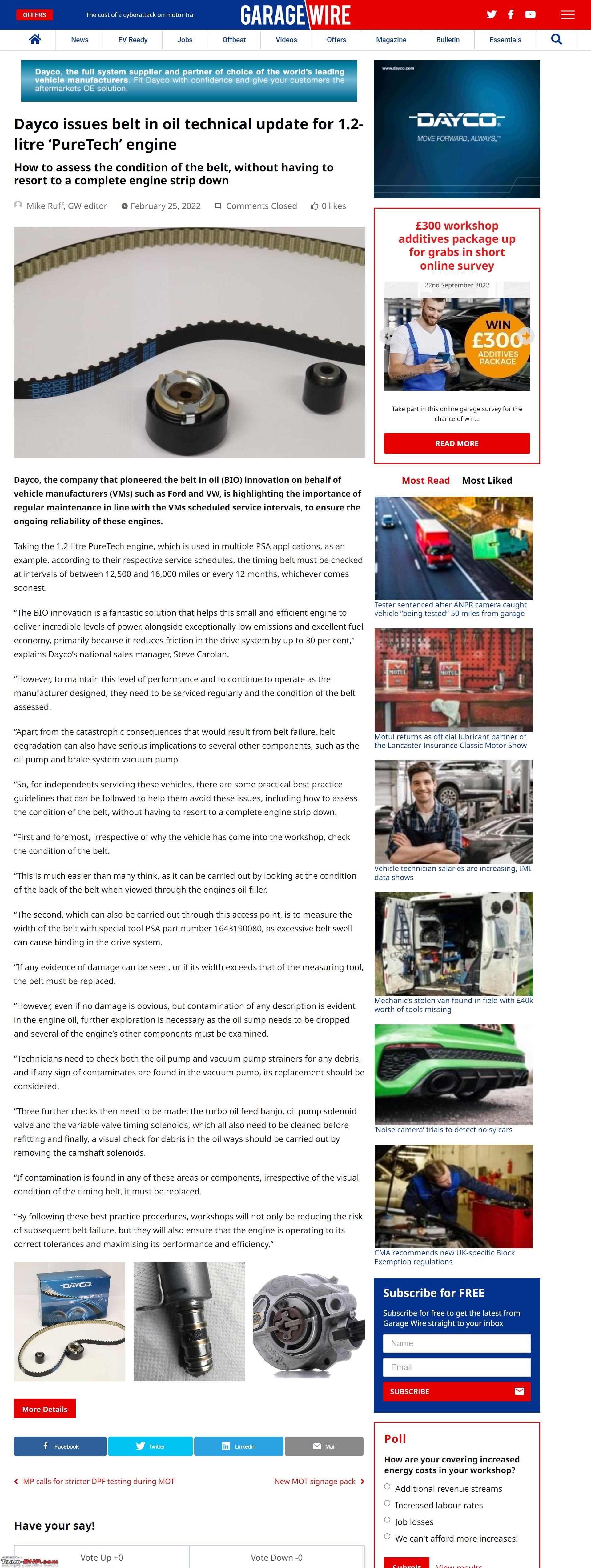Timing Belt Replacement: Avoid These Consequences
When replacing your timing belt, avoid consequences by sticking to the manufacturer’s recommended schedule. Neglecting this maintenance could lead to engine damage and costly repairs.
Maintaining a regular timing belt replacement schedule is crucial for the longevity and performance of your vehicle. A worn-out timing belt can cause serious engine issues, so it’s essential to prioritize this replacement as part of your regular maintenance routine.
By recognizing the importance of timing belt replacement and adhering to manufacturer guidelines, you can avoid potential consequences and keep your vehicle in optimal condition. Regular maintenance not only ensures reliable performance but also prevents costly repairs down the line, ultimately saving you time and money in the long run.

Credit: www.trodo.com
Importance Of Timing Belt Replacement
htmlRegular timing belt replacement maintains engine health, prevents costly repairs, and avoids engine failure.
Replacing timing belts per manufacturer guidelines is crucial to avoid catastrophic engine damage.
Avoiding a timing belt replacement can lead to bent valves, damaged pistons, or complete engine failure.
A worn timing belt affects engine efficiency, leading to performance issues such as misfires, rough idling, or decreased power output.
Replacing the timing belt on time ensures that the engine runs smoothly, efficiently, and optimally.
Proper timing belt replacement helps maintain engine power, fuel efficiency, and overall performance.
Signs That Indicate Timing Belt Replacement
Noise From Timing Belt Area
If you hear a high-pitched screeching or whining noise coming from the timing belt area, it may signify a loose belt or worn-out bearings. This could indicate that the timing belt needs replacement as it is slipping or not properly taut. Addressing this issue promptly can prevent more severe damage to the engine.
Engine Misfires Or Stalls
Engine misfires or sudden stalls can be a consequence of a faulty timing belt. When the belt is worn or damaged, the engine’s timing becomes disrupted, leading to these issues. Ignoring these signs can result in costly engine repairs, so it’s crucial to investigate and replace the timing belt if necessary.
Visible Cracks Or Damage
Inspect the timing belt for visible cracks, fraying, or glazing. If you notice any wear and tear, it’s a clear indication that the timing belt has deteriorated. The presence of these issues necessitates immediate replacement to avoid the potential for the belt snapping and causing extensive damage to the engine components.
Consequences Of Delaying Timing Belt Replacement
Delaying timing belt replacement can lead to serious consequences that can significantly impact the performance and longevity of your vehicle. Understanding these consequences is crucial for every vehicle owner to prevent potential damage and costly repairs in the future.
Engine Failure
One of the most severe consequences of delaying timing belt replacement is the risk of engine failure. The timing belt plays a critical role in synchronizing the movements of the engine’s camshaft and crankshaft. If the belt fails, the valves and pistons can collide, leading to extensive internal engine damage.
Costly Repairs
Another consequence of procrastinating timing belt replacement is the potential for costly repairs. When the timing belt fails, it can cause damage to other engine components such as the cylinder head, valves, and pistons. Replacing these parts and repairing the engine can be an expensive endeavor, easily surpassing the cost of timely timing belt replacement.
Timing Belt Replacement Interval
Introductory paragraphTiming Belt Replacement Interval: The timing belt in your vehicle plays a crucial role in the engine’s operation. Regular replacement is essential to prevent severe consequences.
H3 heading: Manufacturer’s RecommendationsManufacturer’s Recommendations
List of manufacturer’s recommendations- Consult your vehicle’s manual for specific replacement intervals.
- Maintain your vehicle as per the manufacturer’s guidelines.
- Follow the recommended timing belt replacement schedule diligently.
Factors Affecting Replacement Interval
List of factors affecting replacement interval- Driving conditions and mileage affect the timing belt lifespan.
- The type of engine in your vehicle can impact the replacement interval.
- Maintenance history and belt material influence the timing belt’s durability.
How To Choose The Right Timing Belt
Choosing the right timing belt is crucial to avoid potential consequences. Ensure to consider factors such as mileage, manufacturer’s recommendations, and maintenance history for an optimal timing belt replacement.
When it comes to choosing the right timing belt for your vehicle, there are a few key factors you should consider. From the make and model of your car to the quality and reliability of the belt, each decision you make can affect the overall performance and longevity of your engine. By taking the time to choose the right timing belt, you can avoid costly consequences and ensure your vehicle runs smoothly for years to come.Consider Car Make And Model
Choosing the right timing belt begins with considering the make and model of your car. Not all timing belts are created equal, and different vehicles have different requirements. Each car manufacturer may have specific recommendations for the timing belt, including the type and size. It’s important to research and understand the specific requirements for your make and model to ensure compatibility.Verify Oem Specifications
To choose the right timing belt for your vehicle, it’s crucial to verify the Original Equipment Manufacturer (OEM) specifications. OEM specifications indicate the specific requirements set by the manufacturer for the timing belt. These specifications outline important details such as size, material, and installation guidelines. By adhering to the OEM specifications, you can ensure the timing belt meets the exact requirements of your car, reducing the risk of malfunctions or failures.Quality And Reliability
Quality and reliability are paramount when it comes to choosing the right timing belt. Investing in a high-quality timing belt not only ensures a longer lifespan but also minimizes the risk of premature wear and tear. Look for reputable brands that have a proven track record of manufacturing reliable timing belts. It’s also recommended to read customer reviews and testimonials to gauge the overall performance and durability of the belt. By prioritizing quality and reliability, you can avoid the consequences of a faulty or inferior timing belt. When it comes to choosing the right timing belt, it’s crucial to consider the make and model of your car, verify the OEM specifications, and prioritize quality and reliability. By taking these factors into account, you can avoid the costly consequences of using an incompatible or low-quality timing belt. Ensure proper performance and maintain the longevity of your engine by making an informed decision when it comes to timing belt replacement.
Credit: en.wikipedia.org

Credit: www.team-bhp.com
Frequently Asked Questions On Timing Belt Replacement: Avoid These Consequences
What Happens If I Don’t Replace My Timing Belt?
Neglecting to replace your timing belt can lead to engine damage, breakdown, and costly repairs.
Is There Any Warning Before Timing Belt Breaks?
Yes, warning signs of a timing belt about to break include engine misfires, rough idling, and high-pitched noise. Regular maintenance and inspection can help prevent sudden belt failure.
What Else Should You Do When Replacing Timing Belt?
When replacing a timing belt, it’s important to also replace the tensioner and pulleys for optimal performance. Inspect and possibly replace the water pump, camshaft and crankshaft seals, and the drive belts. Additionally, it’s essential to follow the manufacturer’s recommended service intervals.
What Messes Up A Timing Belt?
Common causes of a timing belt failure include age, wear and tear, oil contamination, and improper installation.
Conclusion
A timely timing belt replacement avoids costly engine damage. Don’t risk breakdowns – prioritize preventative maintenance. Trust professional mechanics for safe and reliable service. Stay proactive in caring for your vehicle to ensure smooth performance. Remember, prevention is key in ensuring your vehicle’s longevity.

